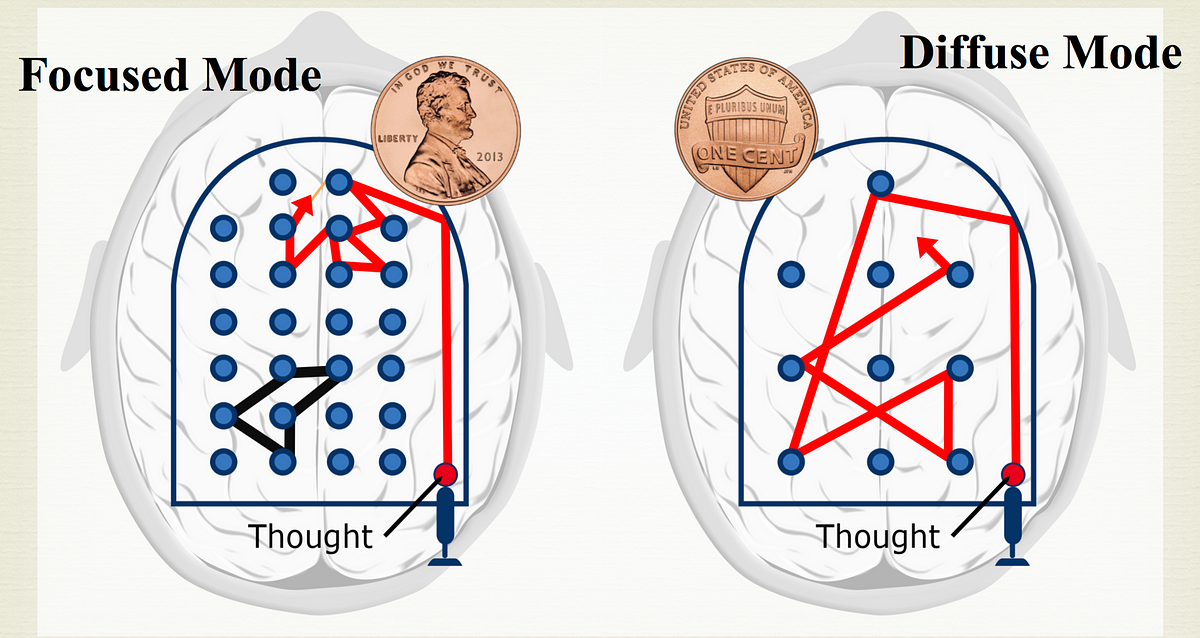Copy content from this section and paste it to yours
Researchers have found that we have two fundamentally different modes of thinking. Here, I'll call them the Focused and the Diffuse modes.
Scientists: you can't be in both thinking modes at the same time.
Focused mode:
Working with something familiar. Executing known algorithm.
Diffuse mode:
In this diffuse mode of thinking, you can look at things broadly from a very different, big-picture perspective.

Question:
Answer:
What are the two modes of thinking?
Answer:
1. Focused mode
2. Diffuse mode
Question:
Answer:
When is the focused mode used?
Answer:
Focused mode is used when people solve well known familiar problems with defined algorithm.
Question:
Answer:
What is the diffuse mode?
Answer:
It is a more relaxed thinking style and it is related to a set of neural resting states.
Question:
Answer:
Can the brain be in both modes of thinking at the same time?
Answer:
No. Studies say it can't.
If you try to edit (correct) at the same time as you write (create) you may lose the ability to make something creative.
"I mean, how would you describe the difference between diffuse mode and focused mode, when you're thinking about, and when it comes to writing? Yeah. That's a really really important point because, for me the diffuse mode, I call that the creative or writing mode. The focus mode, I call the editing brain. One of the big mistakes that many people make when they're writing, is they try to write with their editing brain."
Question:
Answer:
Why trying to correct and create something at the same time is a bad idea?
Answer:
The brain constantly switches between different modes of thinking which greatly reduces efficiency.
Famous people
Salvador Dali used to relax in a chair and let his mind go free, often still vaguely thinking about what he had previously been focusing on. He had have a key in his hand so when he fall asleep key would fall from his hand and sound will wake him up. So he had go back into the focus mode and bringing with him new connections he had made while in the diffuse mode.
Something similar with the ball bearings in hand did Edison.
Synapses and sleep
When we learn something new, we create new connections between our neurons.
Question:
Answer:
How are learning and synapses related?
Answer:
Now we know that when we learn something new, neurons will grow new synapses.
Question:
Answer:
What are the best next steps to take when you find that you are stuck on a problem?
Answer:
Switch your attention to something completely different, or even better, go for a walk or take a shower--anything that allows your mind to relax and dart randomly around
Question:
Answer:
What could you do if you were stuck solving a problem in the evening?
Answer:
If you are already tired, go to sleep and try again in the morning
